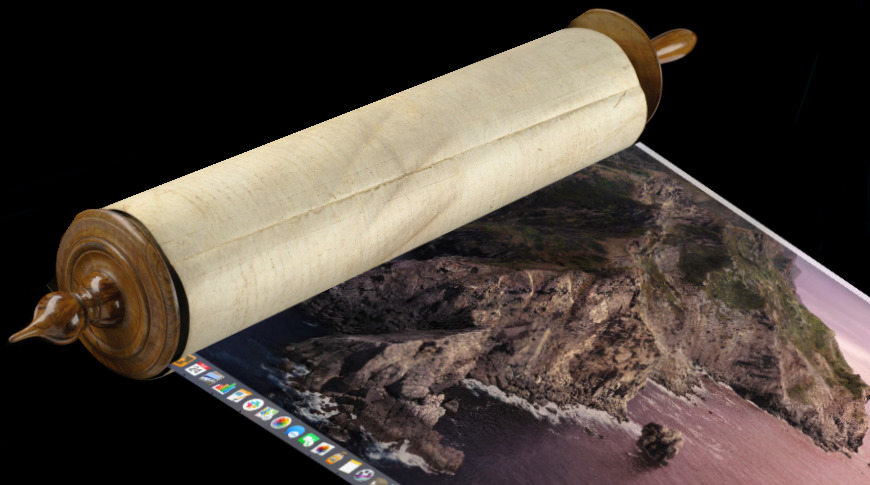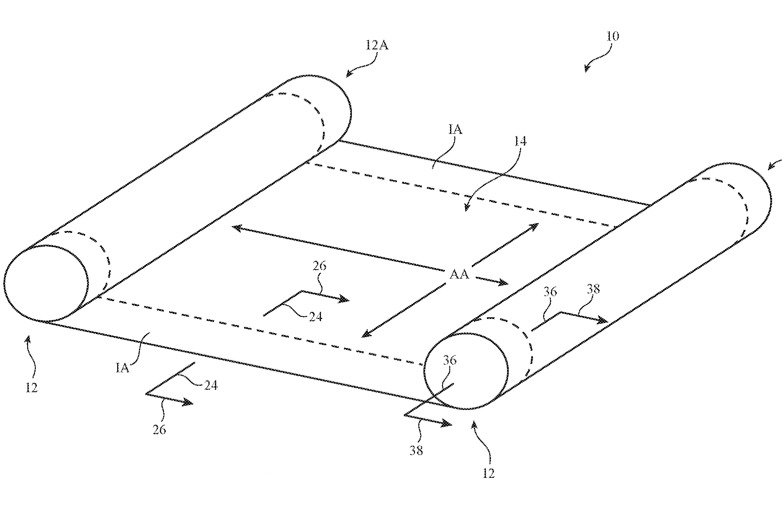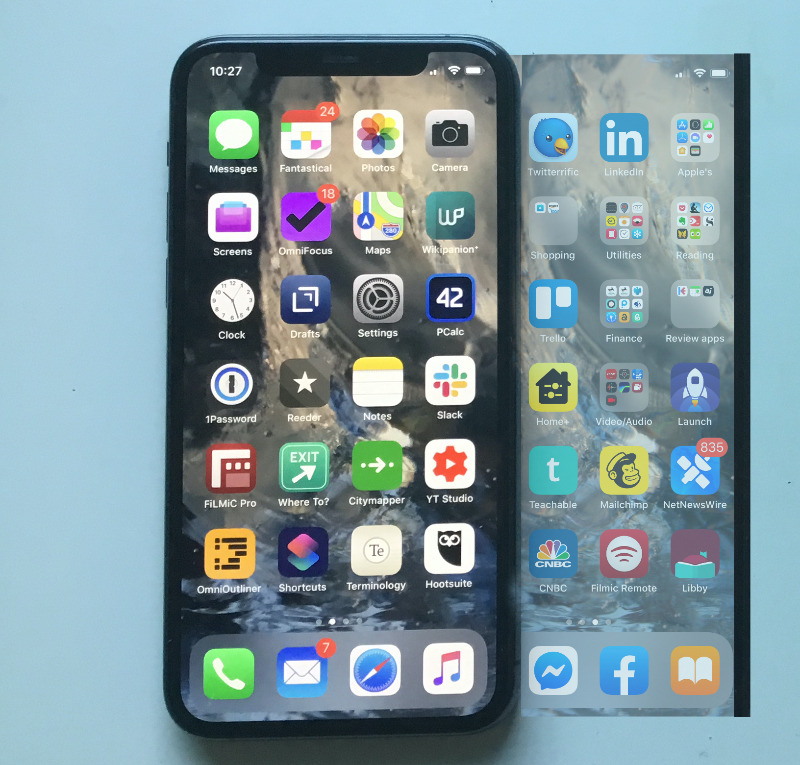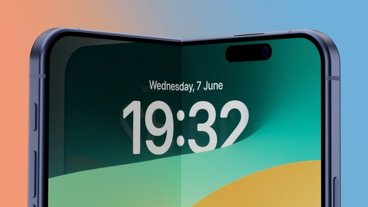To combat the common failure at the hinge that existing folding smartphones commonly suffer from, Apple is looking at how to make iPhone screens that can be rolled out when needed, and rolled back up when not.
Following both recent patents about foldable displays, and also much older ones, Apple is now also investigating screens that can be stored rolled up.
"A flexible display may be wrapped around one or more rollers," says US Patent No 10,602,623, called "Electronic device with flexible display structures."
The purpose is not necessarily to replicate old-style parchment rollers, but rather to have a device such as an iPad with a screen that can be pulled out of the chassis. The rollers need not be so visible as a scroll, but rather a small part of the mechanism which allows such a screen to be held within a device and rolled out.
Apple aims to address how "rigid structures... can make it challenging to form compact electronic devices with desired features." The patent does describe an application where there is such a rigid section for a housing printed circuit boards, electronic components, and so on, but then also a rollable display.
"In a stored position, the flexible display may be wrapped around a storage roller," explains the patent. "Optional deployment rollers may be used to help deploy the display as the display is pulled out of the housing."
Deployment rollers would keep the screen straight and steady as it's removed, rather than this truly being like an old parchment roller where the paper can become wrinkled as it's pulled out. "Elongated bistable support members may run along the edges of the display or may be overlapped by a central active area of the display to help stiffen and support the display in its extended position," continues the patent.
Apple wants to make it so that the screen is useful at all times, too, so that it can display information even when rolled up. "A flexible display may be viewable through a transparent housing window before and after the flexible display is pulled out of the housing," it says.
The patent application describes rolling the display around either one or two rollers, so you can imagine a screen being pulled out to show a small display, or then wider to provide a greater working space. As ever, Apple's patent attempts to cover every conceivable use of this, so it specifies that such rollable displays could be housed in everything from a laptop to a pendant, or even eyeglasses.
"The housing may have a single body," continues the patent, "eg when [the] device is a cellular telephone, tablet computer, wristwatch device etc... Or may have multiple body portions that are coupled by one or more hinges (e.g., in a laptop computer, a bifold or trifold device, or other device with foldable portions."
This patent is credited to inventor Scott A. Myers. Among his more than 150 prior patents, there are many related ones such as "Electronic devices with sidewall displays."
Separately, US Patent No 10,600,989, the very similarly named "Electronic devices with flexible displays," is an updated one which concentrates on having a bendable device.
"A display may span the bend axis," it says. "To facilitate bending about the bend axis, the display may have layers such as a display cover layer with grooves or other recesses. The recesses form a flexible portion in the display layer."
What's significant in relation to the rollable display is that this details having multiple layers to a flexible display, which allows the device to have a hinge. This patent is credited to Jiang Ai, Erik A. Uttermann, and Soyoung Kim.
These patents are far from the first that Apple has applied for in regard to flexible or bendable displays, but it does also have a prior one that is specifically about rollable ones. In 2017, it applied for a similar patent regarding a retractable, roll-up display.
 William Gallagher
William Gallagher









-m.jpg)






 Christine McKee
Christine McKee
 Marko Zivkovic
Marko Zivkovic
 Mike Wuerthele
Mike Wuerthele

 Amber Neely
Amber Neely
 Sponsored Content
Sponsored Content
 Wesley Hilliard
Wesley Hilliard









11 Comments
Just like the movie Red Planet (2000) - they had rollable screens then. It was pretty cool.
Ah! Just read US Patent No 10,602,623, interesting.
What exactly are Apple patenting here? It seems - a display that can fit in a hinge, how it would bend, and how the layers of the display would be kept in place and not buckle.
Essentially they are using a flexible display semi laminated to the inner surface of a transparent material, the gap filled with material (maybe even a gel) with the correct refractive index that it would make the display look closer to the surface.
Imagine a book - this would be used on the spine. With two standard display panels on the front and back cover.
The spine display integrates with the front and back covers such that you can's see the join between the displays.
Now, if you have a phone like this, and were to open the phone like a book (only you look at the cover of the book instead of inside the book) you would now have a tablet.
The grooves cut into the material are so that it can bend. That's standard, nothing new.
I didn't see the rollable screens from Red Planet in this patent though.
YES. I first saw something along these lines on the series Earth: Final Conflict and thought then it was an ideal solution. No single line that gets all the stress, spread it out with a small amount of bending across the whole screen.
Nah, never going to happen.
iPhone Cigar. Just don’t smoke it!